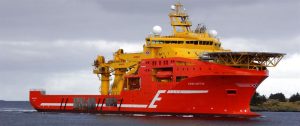Wärtsilä Gives Hybrid Upgrade to Offshore Vessel
 Technology group Wärtsilä has been selected to engineer, supply, and commission a hybrid propulsion system for an offshore sector vessel. Norway-based Eidesvik has contracted Wärtsilä to carry out the upgrade project on its Viking Neptun construction vessel.
Technology group Wärtsilä has been selected to engineer, supply, and commission a hybrid propulsion system for an offshore sector vessel. Norway-based Eidesvik has contracted Wärtsilä to carry out the upgrade project on its Viking Neptun construction vessel.
The 15,900 DWT Viking Neptun was built in 2015. It is fitted with Wärtsilä engines and Wärtsila’s Low Loss Concept (LLC) electrical systems. By choosing Wärtsilä’s battery hybrid solution, the ship will be able to operate on a single generator set together with batteries during dynamic positioning (DP) operations. Integration of the new system with the existing Wärtsilä control systems will be seamless.
The Wärtsilä hybrid solution will deliver customer benefits in the form of fuel cost savings and better environmental performance. Furthermore, maintenance costs will also be reduced since the load on the engines will be more efficient and the running hours will be less.
“Wärtsilä continues to lead the industry’s technological transformation into a new era of greater efficiency and more sustainable operations. Our hybrid solutions are well established and proven, and this latest project order is a further endorsement of our competences in this field,” says Cato Esperø, Head of Sales, Service Unit Nordics and Baltics, Wärtsilä Marine.
“It is very important to our company that we play our part in reducing greenhouse gas emissions from shipping, which is why we give a high level of priority to sustainable operations for our fleet. We have worked closely with Wärtsilä for many years and we were comfortable with again selecting them for this hybrid upgrade project,” says Vice President, Technology & Development, Vermund Hjelland, Eidesvik.
The Wärtsilä scope includes two 870kWh battery packs and two 2.7MW drives for the hybrid system pre-installed in containers. Wärtsilä will also upgrade the existing switchboard, as well as the integrated automation and power management systems. The project is expected to be completed within a six months period.






